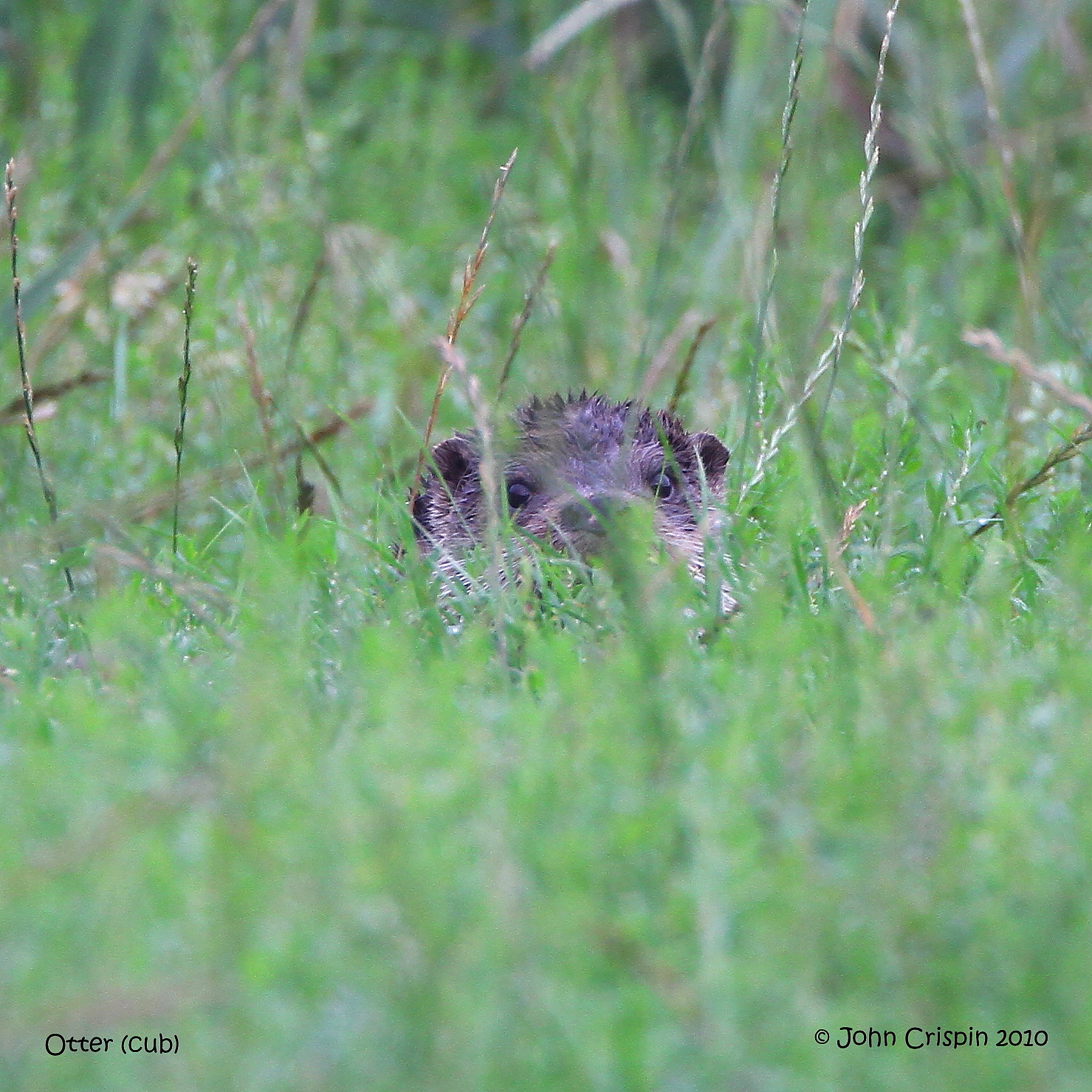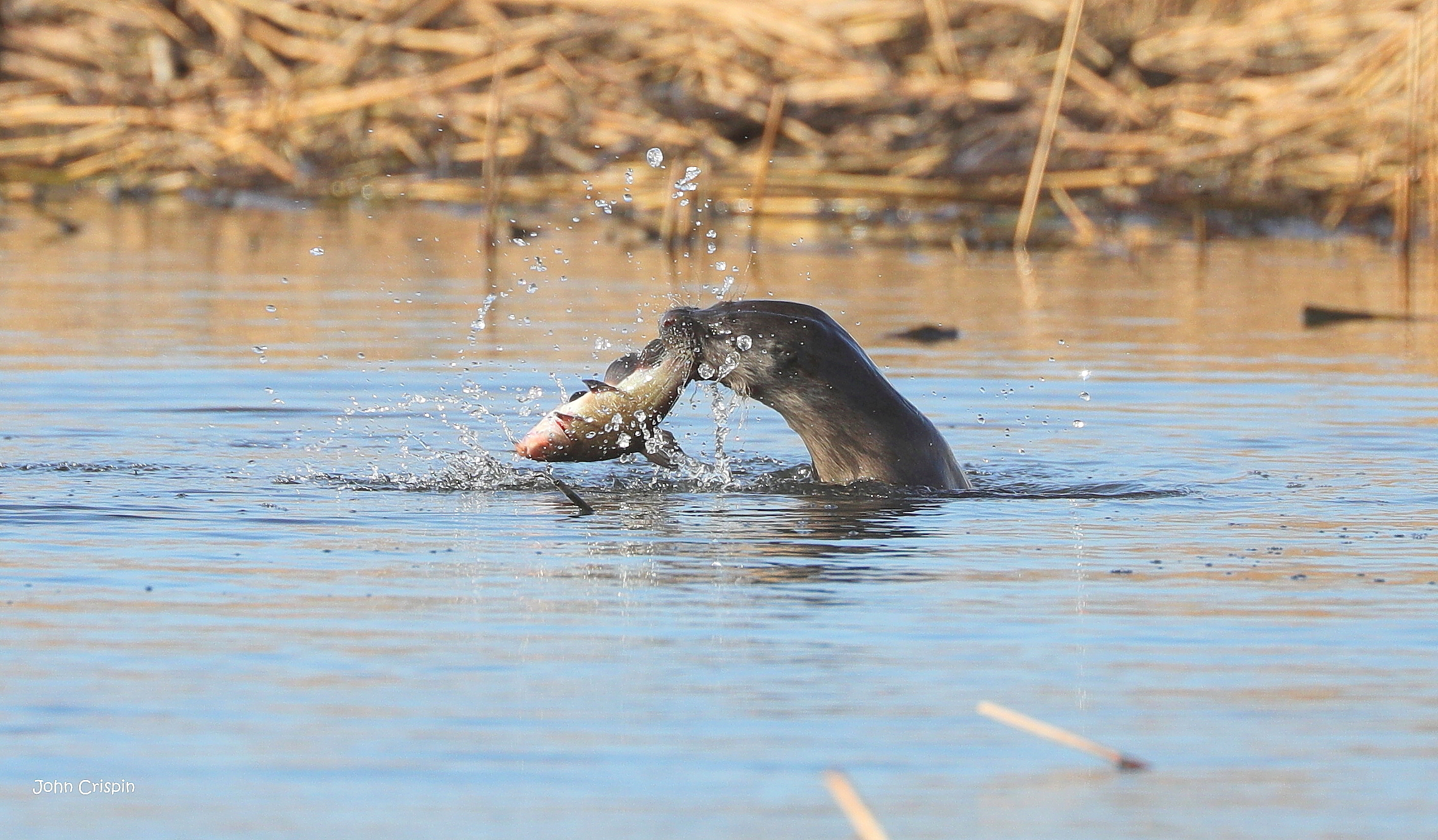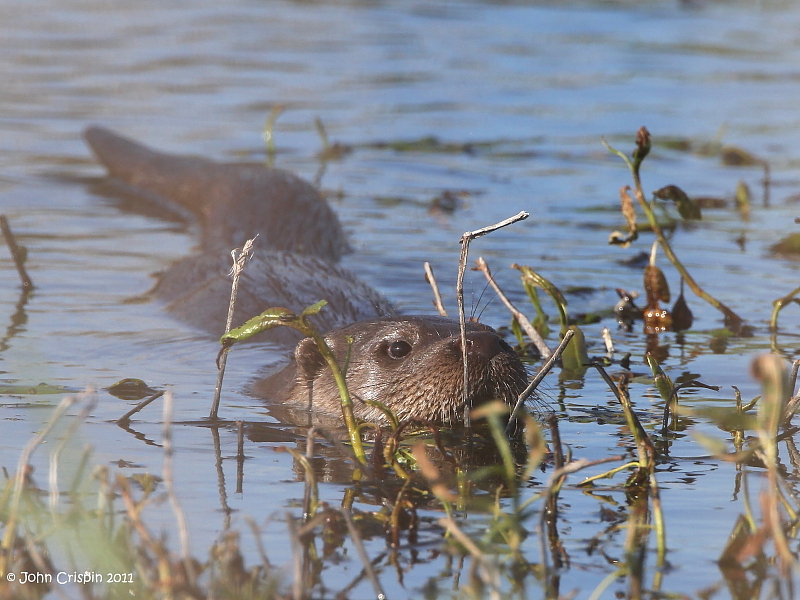The Somerset Otter Group was originally founded to see if there were any otters left after the major decline to near extinction.
Happily the goal posts have moved a lot since the mid 1980’s.
OTTER CONSERVATION IN SOMERSET: PRIORITIES AND ACTIONS FOR THE FUTURE.
by Dr Rob Williams
Introduction
The European Otter Lutra lutra is a widespread species that occurs from western Europe and north Africa east to Japan and south-east Asia. Across this range the species has declined in many areas. In the UK the otter declined rapidly during the 1950s, 60s and 70s and by the mid 1980s otters were absent from many areas of the country with isolated populations persisting only in remoter upland areas in the South-west and North-west England, Wales and Scotland. Happily, it has staged a remarkable recovery in the UK and is now, once again, found throughout the country, with otters recently having colonised Kent again. There are some small areas where populations are still to reach carrying capacity but it seems likely natural population increase will soon fill this and as the health of aquatic ecosystems continues to improve otters should once again be found throughout the country.
In Somerset the otter had disappeared from most of the county by 1974, with just a few individuals remaining on the highlands of Exmoor. The population there, and in adjacent rivers of Devon, formed the basis for a natural recovery that saw the species spread eastwards during the late 1980s, through the Tone catchment and onto the Somerset levels and adjacent river systems. Since the late 1990s Somerset has effectively been “full” of otters and the population now seems to have stabilised.
When the otter was in crisis, urgent measures such as the reintroduction projects carried out by the Otter Trust and the Vincent Wildlife Trust were instigated to assist in the recovery of the otter across the country. Conservation and research efforts have historically focused on these reintroductions, public education, monitoring of range expansion, and post-mortem analysis of dead otters. These have all helped us gain a better understanding of the species in the UK and contributed to the recovery.
Given the current situation and the fact that the otter is legally protected in the UK there would seem to be little need for intensive otter conservation work if the population remains stable or continues to increase to capacity. However, given the speed with which the otter declined and how close it came to being lost previously, it is important to consider threats to the otters and what actions can be taken to mitigate these and what monitoring of otters we need to alert us in case there is a problem in the future.
The work of the Somerset Otter Group

Somerset Otter Group documented this decline and recovery, worked to reduce mortality of the species and as an advocate for the species conservation in the region. The group’s research has led to Somerset being one of the counties with the best understanding of its otters. This research also led to the identification and documentation of a new bile fluke for the UK. The data held has helped the group advise on mitigation measures on roads and other development projects.
Somerset Otter Group recognises the need for a new approach to otter conservation and the group’s strategic plan, summarised below, is a first step towards that. The document outlines the current threats to the species in Somerset and proposes a plan of action for the next decade.
Current Threats to otters in Somerset
Most of the recorded otter mortality in Somerset comes from road casualties. Mitigation work has been carried out at some otter death black spots but work remains to be done to mitigate existing roads and ensure that new road structures are as otter friendly as possible. Extreme weather events are a factor in causing otters to be killed on the roads and an analysis of this is needed to help design future mitigation measures.
S ome otters continue to be killed illegally. Whilst the reason for any individual otter remains hard to prove, working to reduce human-otter conflicts will hopefully reduce the likelihood of future persecution. The most obvious conflict is with fisheries and it should be a priority to try to document real impacts of otters, effectiveness of mitigation work and to educate the fishing community about otters as so much misinformation is spread about the species.
ome otters continue to be killed illegally. Whilst the reason for any individual otter remains hard to prove, working to reduce human-otter conflicts will hopefully reduce the likelihood of future persecution. The most obvious conflict is with fisheries and it should be a priority to try to document real impacts of otters, effectiveness of mitigation work and to educate the fishing community about otters as so much misinformation is spread about the species.
Disturbance of otters, especially of breeding sites, remains an issue and more needs to be done to better understand this issue, particularly the effect of dogs on otters. Strategies need to be developed to minimize the impacts of disturbance and promote areas where otters and other riparian wildlife can breed and live alongside humans.
SOMERSET OTTER GROUP STRATEGIC PLAN 2016-2025
Vision: By 2025 the Otter has a healthy population across Somerset and people are aware of its status and importance as an indicator for the health of the aquatic ecosystem.
Objectives
-
-
- Continue to monitor the species status in the county.
- Mitigate and research current and future threats for the species in the county.
- Support research into otter population and status.
- Educate people about otters and their conservation.
- Promote the conservation of riparian and other aquatic ecosystems.
-
Activities
Objective 1: Continue to monitor the species status in the county
1.1 Continue to monitor the county’s otters through the annual “2-day event” survey. The SOG will continue to coordinate over 100 volunteers in undertaking the annual 2 day event county survey in April. Results will be shared with county and national organisations.
1.2 Coordinate a network of volunteers undertaking regular spraint surveys who submit their records to the Somerset Environmental Records Centre.
1.3 Coordinate a central county collection of data from cameratraps throughout the county. SOG will gather data from cameratraps across the county and ensure this data is shared with SERC. This data will be especially useful in monitoring breeding and cub survival.
1.4 Monitor populations and population health through recovery and post mortem of dead otters. SOG will continue to collect dead otters and pass these on to Cardiff University Otter Project for post mortem.
Objective 2: Mitigate and research current and future threats for the species in the county
2.1 Continue to work with the Environment Agency, Highways Agency and County Council to identify and mitigate otter road traffic accident black spots.
2.2 Undertake a study of perceived and actual impacts of otters on fisheries across the county.
2.3 Undertake a study on habitat use by otters and the impacts of disturbance, particularly dog access to riverbanks on otters.
Objective 3: Support research into otter population and status
3.1 Support the landscape population genetics work of Cardiff University by providing spraint and survey data from the Tone and Brue catchments (2016-2018).
3.2 Provide surveyors to participate in the SW England coastal otter survey (2018-2020).
3.3 Collaborate with future national otter surveys.
Objective 4: Educate people about otters and their conservation
4.1 Produce an annual summary report on the status of the otter in Somerset and make this available to local and national organizations and press.
4.2 Publish results of previous work in scientific journals.
4.3 Give talks and run training events on otters and surveying.
4.4 Produce materials (leaflets and booklets) on otters, their conservation, otter human conflict.
Objective 5: Promote the conservation of riparian and other aquatic ecosystems
5.1 Work with local authorities and other stakeholders to promote the protection, conservation and restoration of riparian habitat throughout the county.
This plan will only be achieved by working in partnership with many other organizations across the county and nationally. We are currently developing funding proposals to support this work.
A Statement on Otter Releases
It is the Somerset Otter Group’s opinion that there is no need for further releases of otters into Somerset and that such releases pose a risk to both the released otter and wild otters in the area, primarily through aggressive interactions but also through disease transfer risk. This risk is greatest for wild cubs if males are released. We recommend that:
-
- Otters should not be released into areas where wild otters are present.
- Otters should only be released back into areas from where they originated.
- Otters should never be released near commercial fisheries.
- Any otter being released should: have a thorough health check, be treated for worms and bile flukes, be microtagged, have had a genetic sample taken and deposited with the Somerset Otter Group or Cardiff University Otter Project.

